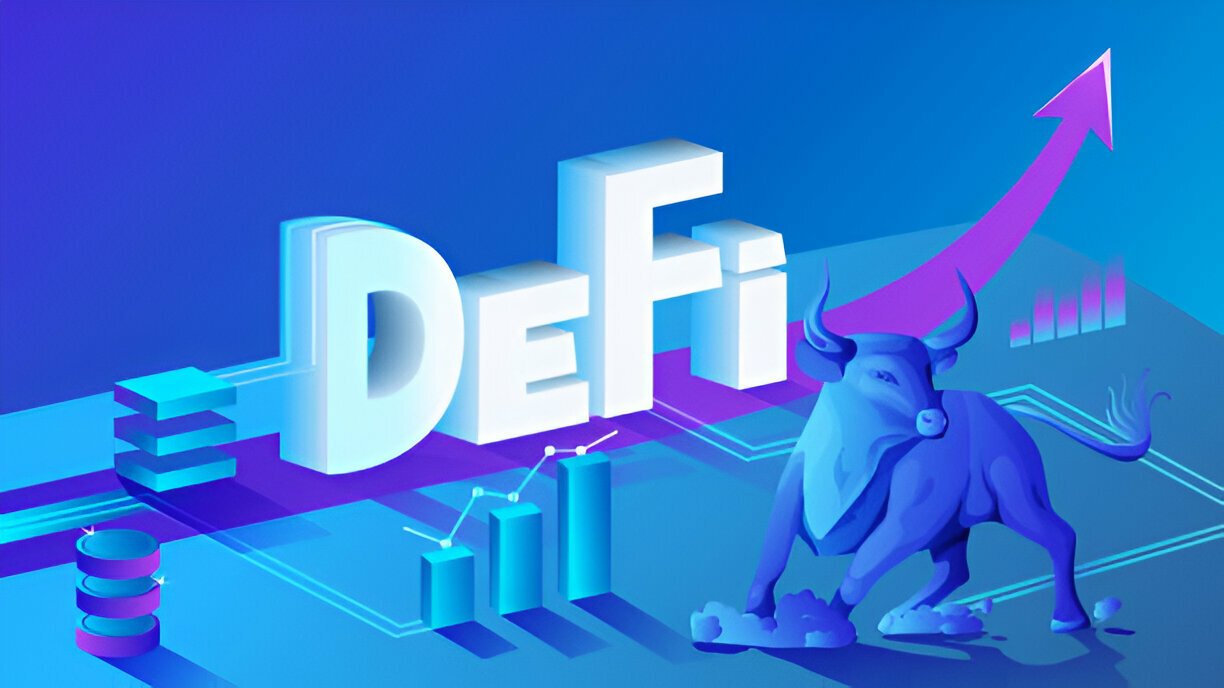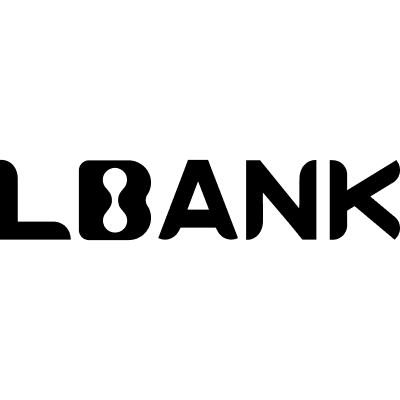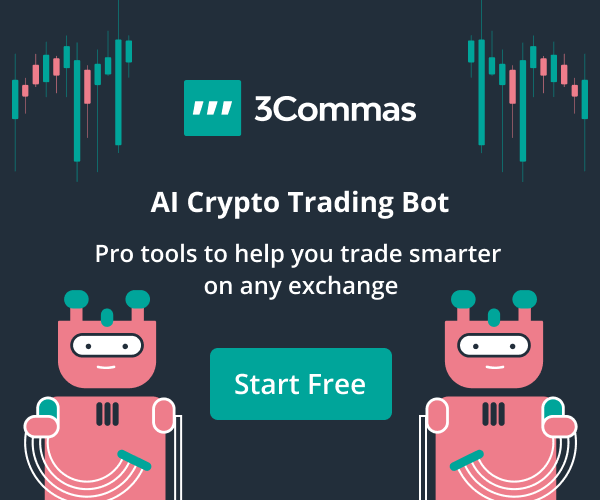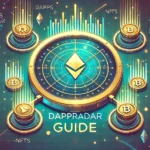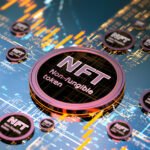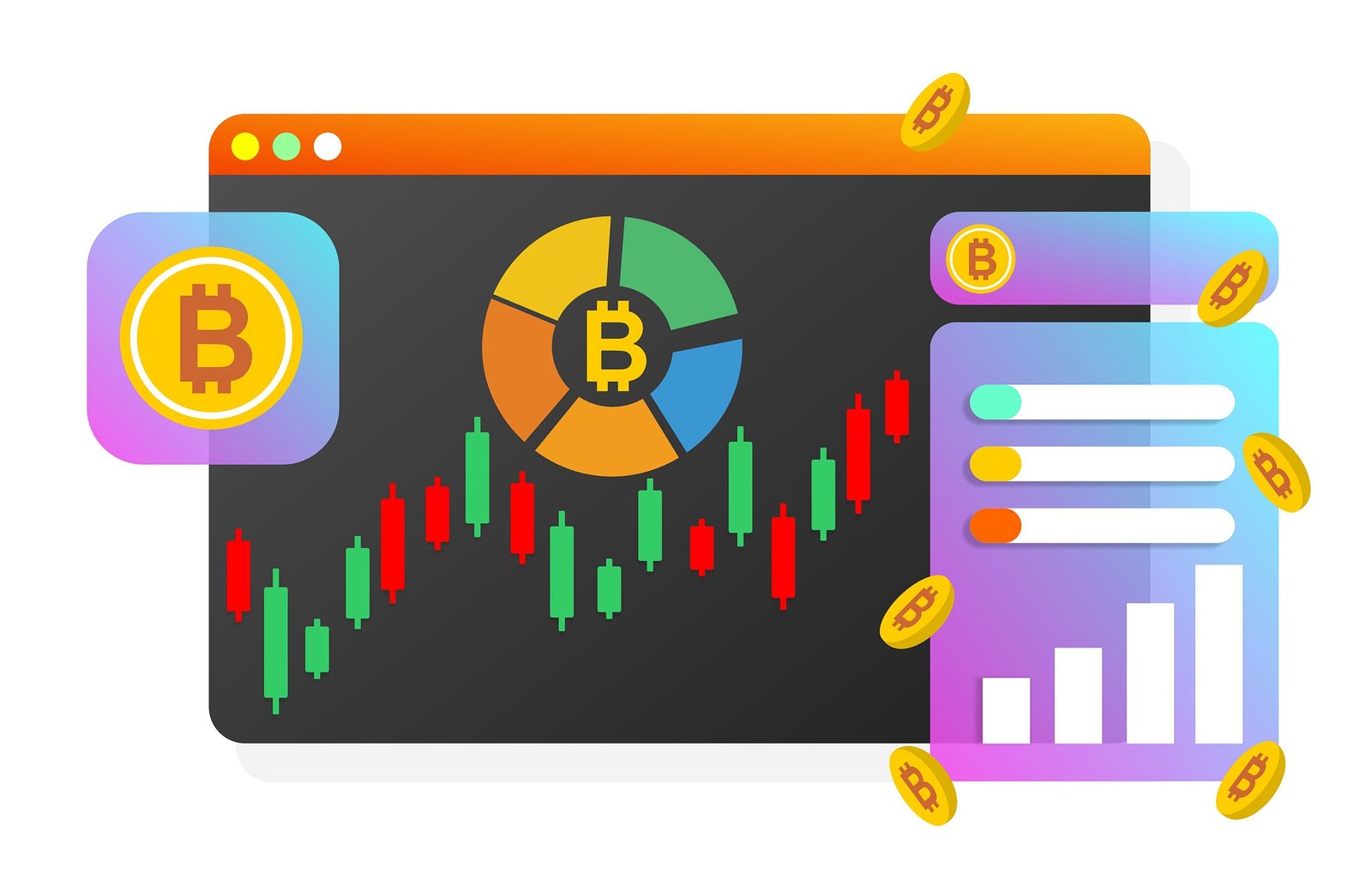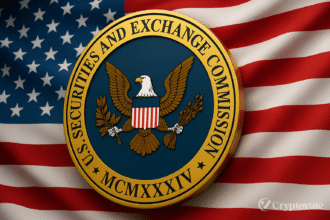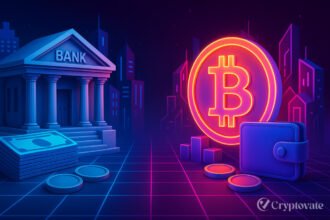– Ad –
| Getting your Trinity Audio player ready... |
Welcome to the world of decentralized finance, or DeFi as it’s commonly known. This revolutionary approach to traditional banking is transforming the way we think about money and financial services. In this beginner’s guide to DeFi, we will explore the fundamental concepts and principles behind this exciting new technology. From decentralized lending and borrowing to decentralized exchanges and stablecoins, we will delve into the key components that make up the DeFi ecosystem. By leveraging blockchain technology, DeFi eliminates the need for intermediaries such as banks, allowing individuals to have full control over their financial transactions and assets. This opens up a world of possibilities for accessing financial services, regardless of your location or socioeconomic status. Whether you’re a complete newcomer to the world of cryptocurrency or an experienced investor looking to diversify your portfolio, this guide will provide you with the knowledge and insights you need to navigate the rapidly evolving landscape of DeFi. Join us as we unravel the mysteries of decentralized finance and discover how it is reshaping the future of finance.
- Introduction to DeFi
- Core Principles of DeFi
- Main Components of DeFi
- Advantages of DeFi
- Risks and Challenges in DeFi
- How DeFi Works
- Leading DeFi Platforms
- DeFi vs. Traditional Finance
- Practical Use Cases of DeFi
- Investing in DeFi
- The Future of DeFi
- Real-World Impact of DeFi
- Regulatory and Compliance Aspects of DeFi
- Conclusion
- FAQs
Introduction to DeFi
What is DeFi?
Decentralized Finance (DeFi) is a blockchain-based financial ecosystem that operates without traditional intermediaries such as banks, brokers, or insurance companies. DeFi utilizes smart contracts on blockchain networks to offer financial services like lending, borrowing, trading, and earning interest.
Why DeFi Matters
DeFi matters because it democratizes access to financial services, making them available to anyone with an internet connection. It enhances transparency, reduces costs, and fosters innovation by enabling open, permissionless access to financial products and services.
Historical Evolution of DeFi
DeFi’s evolution began with Bitcoin’s introduction in 2009, but it gained momentum with Ethereum’s launch in 2015, which enabled the creation of smart contracts. These developments paved the way for the first decentralized applications (dApps) and the subsequent rise of DeFi platforms like MakerDAO, Compound, and Uniswap.
Core Principles of DeFi
Decentralization
Decentralization is the cornerstone of DeFi, removing the need for central authorities and intermediaries. It distributes control across a network of nodes, ensuring that no single entity has unilateral power over the system.
Smart Contracts
Smart contracts are self-executing contracts with terms encoded into the blockchain. They automatically enforce agreements, facilitating trustless transactions and eliminating the need for third-party intervention.
Blockchain Technology
Blockchain technology underpins DeFi, providing a secure, immutable ledger for recording transactions. It ensures transparency, security, and decentralization, enabling the development of a wide range of financial applications.
Tokenization
Tokenization converts real-world assets into digital tokens that can be traded on a blockchain. This process enhances liquidity, enables fractional ownership, and simplifies the transfer and management of assets.
Main Components of DeFi
Decentralized Exchanges (DEXs)
DEXs allow users to trade cryptocurrencies directly from their wallets without relying on centralized exchanges. They use smart contracts to automate trading and provide liquidity, enhancing security and reducing transaction costs.
Lending and Borrowing Platforms
DeFi lending and borrowing platforms enable users to lend and borrow cryptocurrencies without intermediaries. These platforms use smart contracts to automate loan agreements, collateral management, and interest rate adjustments.
Stablecoins
Stablecoins are digital currencies pegged to stable assets like fiat currencies (e.g., USD) or commodities (e.g., gold). They provide a stable value in the volatile crypto market, making them useful for transactions, savings, and trading.
Prediction Markets
Prediction markets are platforms that allow users to bet on the outcomes of future events. These markets leverage the collective intelligence of participants to forecast outcomes in various domains, including politics, sports, and finance.
Yield Farming and Liquidity Mining
Yield farming involves earning rewards by providing liquidity to DeFi protocols. Liquidity mining is a subset of yield farming where users earn tokens by staking their assets in liquidity pools. These practices incentivize participation and enhance the liquidity of DeFi platforms.
Also Read: Your First Steps in DeFi: A Practical Guide to Getting Started
Advantages of DeFi
Accessibility and Financial Inclusion
DeFi provides access to financial services for individuals who are unbanked or underbanked, especially in regions with limited traditional banking infrastructure. All that is required is an internet connection and a digital wallet.
Transparency and Trust
Transactions on DeFi platforms are recorded on public blockchains, providing complete transparency. This transparency builds trust among users, as they can independently verify all transactions and activities.
Cost Efficiency
By eliminating intermediaries and automating processes through smart contracts, DeFi significantly reduces transaction fees and operational costs. Users benefit from lower costs and faster transactions.
Interoperability and Innovation
DeFi platforms are designed to be interoperable, allowing seamless interaction between different protocols and services. This interconnected ecosystem fosters innovation and enhances the functionality and usability of DeFi applications.
Risks and Challenges in DeFi
Security Vulnerabilities
DeFi platforms can be susceptible to security vulnerabilities such as smart contract bugs, hacking, and phishing attacks. Regular security audits and robust development practices are essential to mitigate these risks.
Regulatory Uncertainty
The regulatory landscape for DeFi is still evolving, with uncertainties surrounding compliance with local and international laws. Navigating this complexity requires staying informed about regulatory developments and engaging with regulators.
Market Volatility
Cryptocurrency markets are highly volatile, impacting the value of assets held on DeFi platforms. Users must be prepared for price fluctuations and implement strategies to manage market risks.
Scalability Issues
As DeFi platforms grow, scalability becomes a concern. High transaction volumes can lead to network congestion and increased fees. Developing scalable solutions is crucial for the sustainable growth of the DeFi ecosystem.
How DeFi Works
Setting Up a Digital Wallet
To start using DeFi, users need a digital wallet to store and manage their cryptocurrencies. Popular options include MetaMask, Trust Wallet, and Ledger. These wallets connect to DeFi applications, allowing users to interact with the ecosystem.
Connecting to DeFi Applications
Users can connect their digital wallets to DeFi applications through web browsers or mobile apps. This connection enables them to access a variety of financial services, including trading, lending, and staking, directly from their wallets.
Performing Transactions on DeFi Platforms
Transactions on DeFi platforms are executed through smart contracts, which automatically enforce the terms of agreements. Users can perform various financial activities, such as trading tokens, providing liquidity, or borrowing funds, with the assurance that smart contracts will handle the execution and settlement processes transparently and securely.
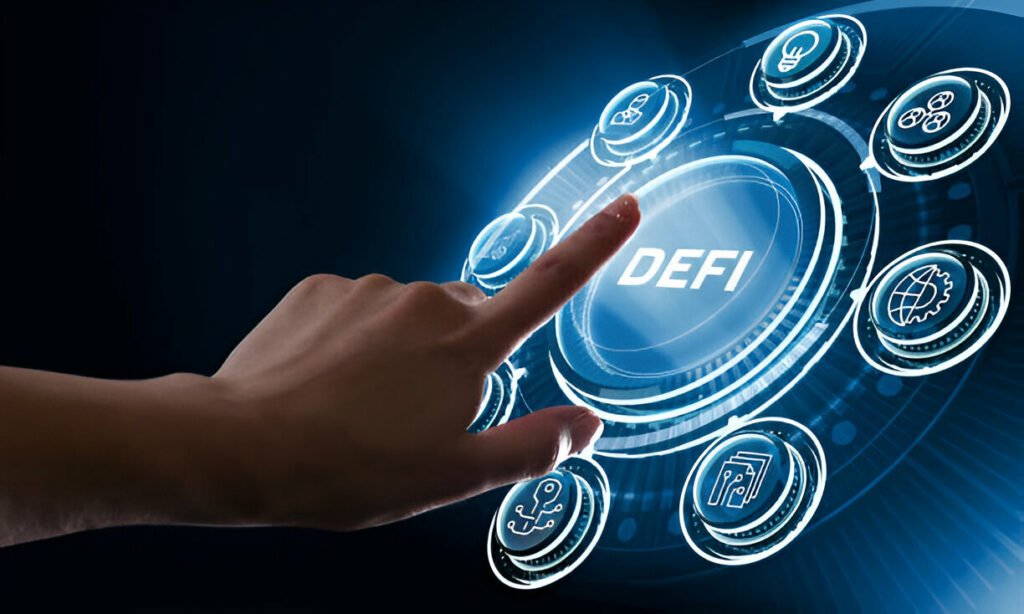
Leading DeFi Platforms
Uniswap
Uniswap is a decentralized exchange (DEX) known for its Automated Market Maker (AMM) model. Instead of relying on order books, Uniswap uses liquidity pools where users can swap tokens directly. Liquidity providers earn fees by contributing their assets to these pools. This model offers continuous liquidity and reduces the risk of large spreads.
Aave
Aave is a popular lending and borrowing platform that allows users to lend their assets to earn interest or borrow assets by providing collateral. Aave introduced flash loans, enabling users to borrow funds without collateral for a single transaction, provided the loan is repaid within the same transaction. This feature supports arbitrage, refinancing, and other complex financial activities.
Compound
Compound is another leading DeFi platform for lending and borrowing. Users can deposit assets into liquidity pools to earn interest or borrow against their deposited assets. The interest rates are algorithmically adjusted based on supply and demand. Compound also introduced a governance token, COMP, which allows users to participate in the protocol’s decision-making process.
MakerDAO
MakerDAO is known for its stablecoin, DAI, which is pegged to the US dollar. Users can generate DAI by depositing collateral into Maker Vaults. MakerDAO’s governance is handled through MKR token holders, who vote on protocol updates and risk parameters. This decentralized governance model ensures that the system remains stable and responsive to market changes.
Synthetix
Synthetix is a platform for creating and trading synthetic assets, which are tokenized representations of real-world assets like stocks, commodities, and fiat currencies. These synthetic assets are backed by collateral and provide exposure to the price movements of the underlying assets without needing to hold them directly. Synthetix enhances the accessibility and liquidity of various asset classes within the DeFi ecosystem.
DeFi vs. Traditional Finance
| Aspect | Decentralized Finance (DeFi) | Traditional Finance |
| Structure | Operates on decentralized networks using blockchain technology, without intermediaries. | Relies on centralized institutions like banks and brokers for transactions and services. |
| Access and Inclusion | Open to anyone with internet access and a digital wallet; no need for a bank account. | Access often requires physical presence, documentation, and approval from financial institutions. |
| Transparency | Transactions are recorded on public blockchains, providing visibility and traceability. | Transactions are usually opaque and controlled by centralized entities, reducing transparency. |
| Costs and Fees | Reduced costs due to the elimination of intermediaries and automation through smart contracts. | Higher fees due to multiple intermediaries and manual processes in traditional setups. |
| Security | Utilizes cryptographic security and decentralized networks; vulnerable to smart contract bugs and hacking. | Security is managed by centralized institutions, with risks including bank failures and insider fraud. |
| Innovation and Adaptability | Rapid innovation with open-source development and community participation. | Slower adoption of new technologies due to regulatory constraints and existing infrastructure. |
| Speed and Efficiency | Faster transaction processing with automated smart contracts and lower operational overhead. | Slower processing times due to reliance on traditional verification and settlement procedures. |
| Regulatory Environment | Emerging and evolving; faces challenges in aligning with existing regulations. | Established and well-defined regulatory frameworks; subject to extensive oversight and compliance requirements. |
Detailed Comparison:
- Structure: DeFi leverages blockchain technology to create a decentralized, peer-to-peer financial system. It relies on smart contracts for transaction execution, eliminating the need for traditional intermediaries like banks. In contrast, traditional finance operates through a network of centralized institutions that facilitate financial transactions and services.
- Access and Inclusion: DeFi provides global access to financial services without the need for a traditional bank account, making it more inclusive, especially for underbanked populations. Traditional finance often requires formal documentation, credit checks, and physical presence, which can exclude certain individuals and regions.
- Transparency: In DeFi, all transactions are recorded on public blockchains, ensuring full transparency and allowing users to verify and audit activities independently. Traditional finance systems often operate with limited transparency, relying on centralized institutions to manage and record transactions privately.
- Costs and Fees: DeFi reduces costs by using smart contracts to automate processes and remove intermediaries, leading to lower fees for users. Traditional finance typically involves higher costs due to the involvement of multiple intermediaries, manual processes, and administrative fees.
- Security: DeFi platforms use cryptographic security and decentralized networks to protect transactions, but they can be susceptible to smart contract vulnerabilities and hacking. Traditional finance relies on centralized security measures, which can be effective but also present risks of systemic failures and insider threats.
- Innovation and Adaptability: DeFi fosters rapid innovation through open-source development, allowing quick implementation of new features and services. Traditional finance often faces slower innovation cycles due to regulatory compliance and existing infrastructure constraints, making it less adaptable to emerging technologies.
- Speed and Efficiency: DeFi processes transactions faster due to automated smart contracts and streamlined operations, leading to quicker settlement times. Traditional finance transactions can be slower because they require manual verification, regulatory compliance, and settlement procedures.
- Regulatory Environment: DeFi operates in a developing regulatory landscape with ongoing efforts to create frameworks that address its unique challenges. Traditional finance is subject to well-established regulations that govern all aspects of financial operations, providing a structured and compliant environment.
This comparison highlights the distinct characteristics of DeFi and traditional finance, illustrating how DeFi’s decentralized, transparent, and cost-efficient model contrasts with the centralized, regulated, and often slower processes of traditional finance.
Also Read: Unlocking the Secrets of DeFi Lending: A Comprehensive Guide
Practical Use Cases of DeFi
Peer-to-Peer Lending
DeFi platforms enable peer-to-peer lending, allowing users to lend their assets directly to other users in exchange for interest. This model provides borrowers with quick access to funds and offers lenders the opportunity to earn higher returns compared to traditional savings accounts.
Decentralized Trading
Decentralized exchanges (DEXs) facilitate the trading of cryptocurrencies directly from user wallets. DEXs offer greater security and privacy than centralized exchanges, as users retain control of their assets throughout the trading process. Automated Market Makers (AMMs) like those used by Uniswap provide continuous liquidity and reduce reliance on order books.
Automated Asset Management
DeFi platforms offer automated asset management tools such as robo-advisors and yield aggregators. These tools help users optimize their investment strategies by automatically reallocating assets to achieve the best returns, considering factors like risk tolerance and market conditions.
Insurance and Risk Management
DeFi provides innovative insurance solutions through decentralized insurance platforms. Users can purchase coverage for various risks, including smart contract vulnerabilities and exchange hacks. These platforms use pools of funds contributed by users to pay out claims, ensuring decentralized risk management.
Cross-Border Payments
DeFi enables cost-effective and efficient cross-border payments by leveraging blockchain technology. Users can transfer funds internationally with lower fees and faster processing times compared to traditional banking systems, which often involve multiple intermediaries and higher costs.
Investing in DeFi
Getting Started with DeFi Investments
To begin investing in DeFi, users should familiarize themselves with the ecosystem and set up a digital wallet. Researching different DeFi platforms and understanding their unique features and risks is crucial. Users can start by participating in low-risk activities like providing liquidity or staking tokens before exploring more complex investment strategies.
Key Strategies for Investing in DeFi
- Yield Farming: Yield farming involves earning rewards by providing liquidity to DeFi platforms. Users can stake their assets in liquidity pools and earn interest or tokens as incentives.
- Staking: Staking involves locking up assets in a blockchain network to support its operations, such as validating transactions, in exchange for rewards.
- Lending: Users can lend their assets to others on DeFi lending platforms and earn interest. The interest rates are typically higher than traditional savings accounts due to the demand for liquidity in DeFi.
Managing Risks in DeFi Investments
Managing risks in DeFi involves conducting thorough research, diversifying investments, and staying informed about the latest security practices. Users should use secure wallets, enable two-factor authentication, and be cautious of phishing attacks. Regularly monitoring investments and rebalancing portfolios can help mitigate potential losses.
The Future of DeFi
Emerging Trends in DeFi
- Cross-Chain Solutions: Cross-chain technology enables interoperability between different blockchain networks, allowing seamless transfers of assets and data across chains.
- Decentralized Identity: Integrating identity verification with DeFi enhances security and compliance while preserving user privacy.
- Layer 2 Solutions: Scalability solutions like Optimistic Rollups and zk-Rollups reduce congestion and lower transaction costs on primary blockchains.
- Tokenized Real-World Assets: The tokenization of real-world assets like real estate and commodities expands the scope of DeFi, enabling new financial services and investment opportunities.
Potential Developments
The future of DeFi will likely see the development of more sophisticated financial products, such as derivatives and synthetic assets. Regulatory frameworks will evolve to address DeFi’s unique challenges, enhancing security and consumer protection. Innovations in user interfaces and educational resources will make DeFi more accessible to mainstream users.
Predictions by Industry Experts
Experts predict continued rapid growth in DeFi adoption, driven by technological advancements and increasing integration with traditional finance. The rise of decentralized autonomous organizations (DAOs) and the convergence of DeFi with other technologies like artificial intelligence (AI) and the Internet of Things (IoT) could lead to new financial models and services.
Real-World Impact of DeFi
Success Stories
- Uniswap and AMM Innovation: Uniswap’s Automated Market Maker (AMM) model revolutionized trading by allowing anyone to create liquidity pools and trade directly from their wallets.
- Aave’s Flash Loans: Aave introduced flash loans, enabling users to borrow funds without collateral for short durations. This innovation opened new possibilities for arbitrage and refinancing.
Case Studies
- MakerDAO’s DAI: MakerDAO’s DAI stablecoin has become a cornerstone of DeFi, providing a stable medium of exchange and a reliable store of value in the volatile crypto market.
- Compound’s COMP Governance: Compound’s introduction of the COMP governance token empowered users to participate in protocol governance, leading to a more decentralized and community-driven platform.
User Experiences
- Personal Finance Management: Many users have successfully managed their finances using DeFi platforms, achieving significant returns through yield farming and staking.
- Access to Credit: DeFi has provided access to credit for individuals and businesses in regions with limited banking infrastructure, demonstrating its potential to address global financial inclusion.
Regulatory and Compliance Aspects of DeFi
Current Regulatory Environment
The regulatory environment for DeFi varies by jurisdiction and is characterized by ongoing development and adaptation. Key regulatory challenges include compliance with anti-money laundering (AML) regulations, securities laws, and tax reporting requirements. Regulators are increasingly focusing on DeFi to ensure consumer protection and financial stability.
Compliance Strategies
DeFi projects are adopting various compliance strategies to navigate regulatory challenges, such as:
- KYC (Know Your Customer): Implementing KYC procedures to verify the identity of users.
- AML Compliance: Integrating AML measures to monitor and prevent illicit activities.
- Self-Regulation: Establishing industry standards and best practices to promote transparency and accountability.
Future Regulatory Challenges
Future regulatory challenges for DeFi may include the need for clearer guidelines on DeFi operations, cross-border regulatory coordination, and the development of frameworks that balance innovation with consumer protection. Collaboration between regulators, industry participants, and stakeholders will be essential to developing effective and adaptive regulatory frameworks for DeFi.
Addressing Common Misconceptions About DeFi
Myths vs. Facts
| Myth | Fact |
| DeFi is just a passing trend | DeFi has demonstrated significant growth and innovation, suggesting a lasting impact on finance. |
| DeFi is only for tech-savvy individuals | DeFi is becoming more accessible through user-friendly interfaces and educational resources. |
| DeFi platforms are unregulated and unsafe | Many DeFi platforms are adopting security measures and self-regulation to enhance trust and safety. |
| All DeFi platforms operate the same way | DeFi platforms vary widely in features, services, and risk profiles; users should research each one. |
| DeFi investments always yield high returns | While DeFi can offer high returns, it also comes with significant risks and potential for losses. |
| DeFi platforms can function without oversight | DeFi platforms must comply with laws and regulations, and are integrating compliance measures like KYC and AML. |
| DeFi will completely replace traditional finance | DeFi complements traditional finance, offering alternative financial services and innovations but is unlikely to replace it entirely. |
| Smart contracts are infallible | Smart contracts can have vulnerabilities and bugs; rigorous testing and audits are essential for security. |
Detailed Explanation:
- Myth: DeFi is just a passing trend.
- Fact: DeFi has shown robust growth with substantial investment and user adoption. Its core principles of decentralization and innovation indicate that it is likely to remain a significant part of the financial landscape.
- Myth: DeFi is only for tech-savvy individuals.
- Fact: While initially attracting tech enthusiasts, DeFi is becoming more accessible through improved user interfaces, simplified onboarding processes, and comprehensive educational resources aimed at a broader audience.
- Myth: DeFi platforms are unregulated and unsafe.
- Fact: Although DeFi operates in a developing regulatory environment, many platforms are adopting advanced security measures, conducting audits, and implementing self-regulation to protect users and build trust.
- Myth: All DeFi platforms operate the same way.
- Fact: DeFi platforms differ significantly in their design, functionality, and risk levels. Users need to research individual platforms to understand their specific features, services, and potential risks before participating.
- Myth: DeFi investments always yield high returns.
- Fact: DeFi can offer high returns, particularly through yield farming and staking, but these come with considerable risks, including market volatility, smart contract vulnerabilities, and potential losses.
- Myth: DeFi platforms can function without oversight.
- Fact: Despite their decentralized nature, DeFi platforms are subject to existing regulations and are increasingly integrating compliance measures such as KYC (Know Your Customer) and AML (Anti-Money Laundering) to align with legal requirements.
- Myth: DeFi will completely replace traditional finance.
- Fact: DeFi provides alternative financial services that complement traditional finance rather than replace it. Both systems are likely to coexist, each serving different needs and user preferences while potentially integrating in innovative ways.
- Myth: Smart contracts are infallible.
- Fact: Smart contracts, while powerful, can contain bugs and vulnerabilities. Thorough testing, code audits, and ongoing security updates are crucial to ensure the reliability and safety of smart contracts in DeFi applications.
This table aims to clarify common misconceptions about DeFi by providing factual insights, helping users better understand the dynamics, benefits, and risks associated with Decentralized Finance.
Clarifying Misunderstandings
| Misunderstanding | Clarification |
| DeFi platforms can operate without oversight | DeFi platforms, while decentralized, still need to comply with existing laws and regulations. |
| All DeFi platforms are the same | DeFi platforms vary in features, services, and risk profiles; thorough research is necessary. |
| DeFi investments guarantee high returns | DeFi investments can offer high returns but also carry significant risks and potential for losses. |
| DeFi is entirely anonymous | While transactions are pseudonymous, they can often be traced, and many platforms require identity verification. |
| DeFi transactions are instant and free | DeFi transactions can incur fees (e.g., gas fees) and might face delays due to network congestion. |
| DeFi protocols are entirely automated and trustless | Many DeFi protocols rely on governance by token holders and can involve human decision-making. |
| DeFi is only useful for cryptocurrency trading | DeFi provides a wide range of services beyond trading, including lending, borrowing, insurance, and more. |
| Using DeFi requires complete technical knowledge | User-friendly platforms and educational resources make DeFi accessible even to those with limited technical knowledge. |
Detailed Explanation:
- Misunderstanding: DeFi platforms can operate without oversight.
- Clarification: DeFi platforms are not entirely exempt from regulatory oversight. They must adhere to local laws and regulations, which may include compliance with KYC (Know Your Customer) and AML (Anti-Money Laundering) requirements, even as they operate on decentralized networks.
- Misunderstanding: All DeFi platforms are the same.
- Clarification: DeFi platforms offer a diverse range of services and have different operational models and risk profiles. Users should conduct in-depth research on each platform’s features, security measures, and user reviews before engaging.
- Misunderstanding: DeFi investments guarantee high returns.
- Clarification: While some DeFi opportunities, such as yield farming and staking, can offer attractive returns, they also come with high risks, including smart contract bugs, market volatility, and potential losses.
- Misunderstanding: DeFi is entirely anonymous.
- Clarification: DeFi transactions are pseudonymous, meaning they are linked to blockchain addresses rather than real-world identities. However, these transactions can often be traced, and many platforms require identity verification as part of regulatory compliance.
- Misunderstanding: DeFi transactions are instant and free.
- Clarification: DeFi transactions can incur costs, such as gas fees for network usage, and may experience delays due to blockchain congestion. Fees and processing times can vary depending on the blockchain and the specific DeFi application used.
- Misunderstanding: DeFi protocols are entirely automated and trustless.
- Clarification: Although DeFi protocols use smart contracts to automate processes, governance often involves human decision-making through decentralized autonomous organizations (DAOs) or token holder voting, adding an element of trust and community oversight.
- Misunderstanding: DeFi is only useful for cryptocurrency trading.
- Clarification: DeFi encompasses a broad spectrum of financial services beyond trading, including lending and borrowing, decentralized exchanges, synthetic assets, insurance products, and more, catering to various financial needs and activities.
- Misunderstanding: Using DeFi requires complete technical knowledge.
- Clarification: While initial DeFi platforms were more technically demanding, many modern DeFi applications are designed with user-friendly interfaces and offer educational resources, making it easier for individuals with varying levels of technical knowledge to participate.
This table provides clear explanations to common misunderstandings about DeFi, helping users better navigate and engage with the DeFi ecosystem by dispelling myths and clarifying facts.
Conclusion
Recap of Key Points
Decentralized Finance (DeFi) represents a transformative shift in the financial sector by leveraging blockchain technology to offer open, permissionless access to a wide range of financial services. It eliminates the need for traditional intermediaries, reduces costs, and enhances transparency and innovation. Key components of DeFi include decentralized exchanges, lending and borrowing platforms, and stablecoins, each offering unique benefits and use cases.
DeFi’s advantages include improved accessibility, transparency, and cost efficiency, making financial services available to a global audience. However, it also faces challenges such as security vulnerabilities, regulatory uncertainties, and market volatility. As the DeFi ecosystem continues to evolve, it is crucial for users to stay informed and adopt best practices for managing risks and maximizing opportunities.
Encouragement for Further Exploration
DeFi is still in its early stages, offering immense potential for growth and innovation. As the ecosystem develops, new opportunities and solutions will emerge, transforming how we interact with financial services. Whether you’re a beginner or an experienced user, exploring DeFi can provide valuable insights into the future of finance. Engage with reputable platforms, stay informed about the latest trends and developments, and consider how DeFi can complement your financial goals and strategies.
FAQs
What is DeFi?
DeFi, or Decentralized Finance, refers to a financial ecosystem built on blockchain technology that operates without traditional intermediaries. It provides a range of financial services, such as lending, borrowing, and trading, through smart contracts and decentralized applications (dApps).
How is DeFi different from traditional finance?
DeFi differs from traditional finance by eliminating intermediaries, reducing costs, and enhancing transparency through blockchain technology. It allows users to interact directly with financial services without relying on banks or brokers, offering greater accessibility and control.
Is DeFi secure?
DeFi platforms utilize blockchain technology and smart contracts to enhance security, but they are not immune to risks such as hacking, smart contract bugs, and market volatility. Users should take precautions, such as using secure wallets and engaging with reputable platforms, to mitigate these risks.
How can I start using DeFi?
To start using DeFi, set up a digital wallet, such as MetaMask or Trust Wallet, and connect it to DeFi applications. Research different DeFi platforms to understand their services and risks. Begin by participating in low-risk activities, such as providing liquidity or staking, and gradually explore more complex opportunities.


